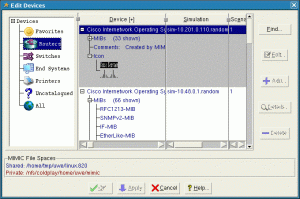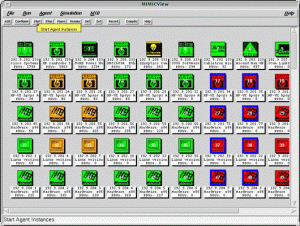SNMP (Simple Network Management) was introduced in 1988. The purpose behind its formation was to deal with an increasing number of network components in a computer network. Gradually, this protocol started becoming admired and it constructs the foundation of network management at present.
Via SNMP one can regain info regarding network devices such as hubs, printers, routers or even standard computers. The info that can be recovered via SNMP is never-ending. Some instances of the kind of info that can be recovered via SNMP are:
• System up time
• Network setting
• Disk usage level, etc.
Not only just the data can be recovered but also these network tools can be configured with unique values via SNMP. In spite of being straightforward in its approach and design, it’s the absolute authority of this protocol that makes it the most admired network management protocol at present.
SNMP system blueprint:
A computer network that employs Simple Network Management for network management consists of three fundamental elements:
• The SNMP manager – it’s an application that generally works with the device on the network for any human administrator dealing with the computer network.
• SNMP agent – it’s an application that generally works on the network node that’s to be managed. This node could be a switch, router, printer, etc.
• SNMP MIB – MIB (Management Information Base). This element ensures that the data switch over between the agent and manager remains structured.
So you can say that the SNMP administrator acts as a boundary between human network administrator and the network node being administered. Likewise, the SNMP agent simulator acts as a border between the network node and SNMP manager being scrutinized.
SNMP messages:
SNMP communiqué between agent and manager takes place in messages. The fundamental messages employed for communication are SNMP GET, SNMP GET-Next, SNMP GET-Response, SNMP SET and SNMP TRAP.
 SNMP messages such as GET and GET-NEXT are employed to get the value of an exact MIB object. And the message GET-RESPONSE is employed generally by the agent to post the reply to a GET message. The message SET is employed by the administrator to put the fresh value of a specific MIB object at the agent. TRAP is employed by the agent to post info regarding some frightening values for several objects to the administrator so that proper action could be accomplished by the manager.
SNMP messages such as GET and GET-NEXT are employed to get the value of an exact MIB object. And the message GET-RESPONSE is employed generally by the agent to post the reply to a GET message. The message SET is employed by the administrator to put the fresh value of a specific MIB object at the agent. TRAP is employed by the agent to post info regarding some frightening values for several objects to the administrator so that proper action could be accomplished by the manager.






0 comments:
Post a Comment